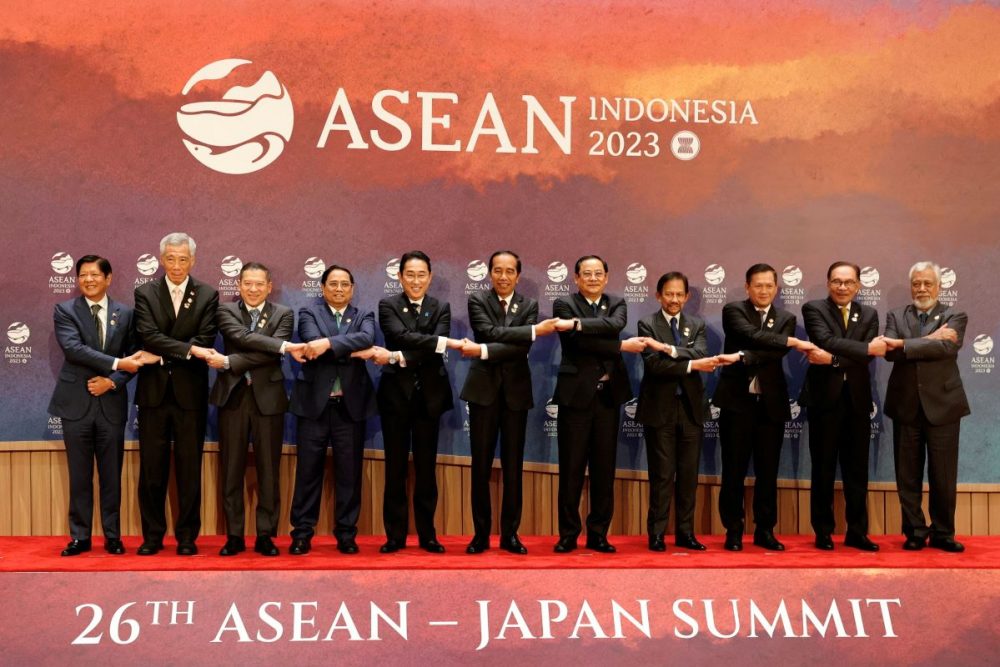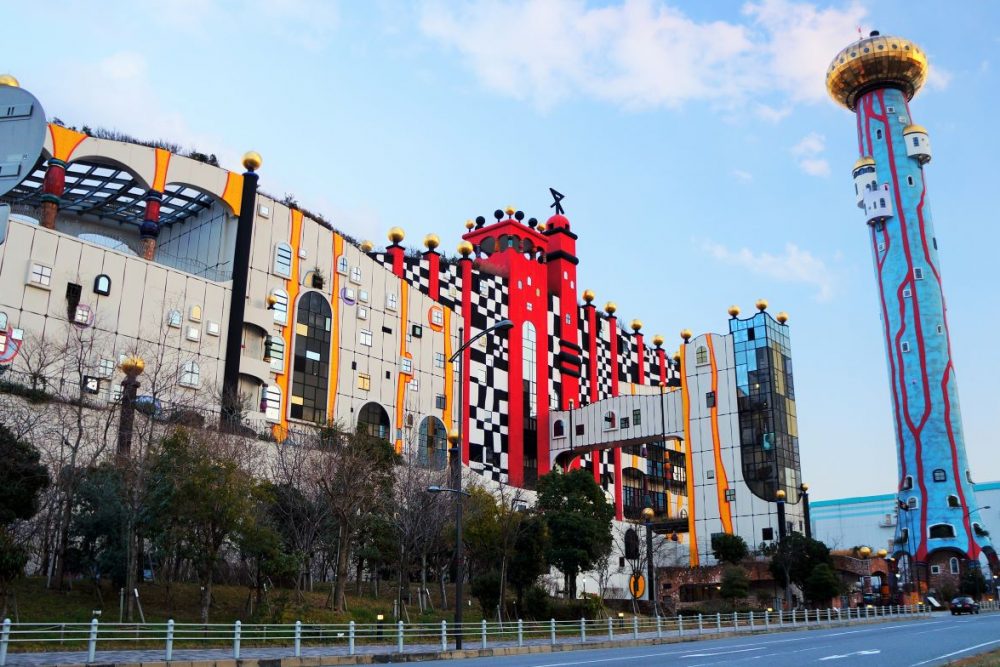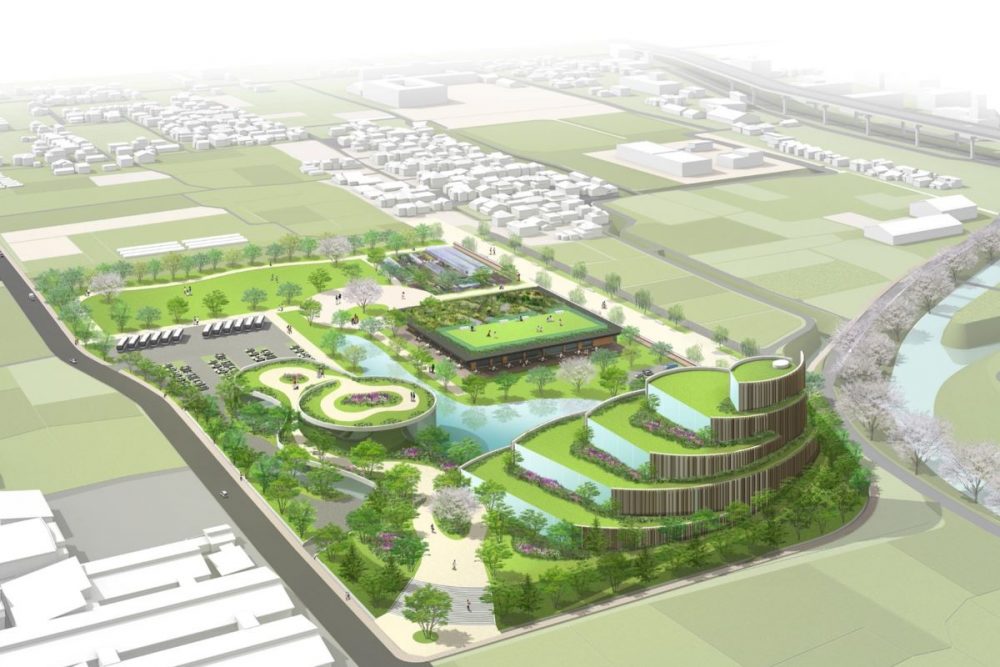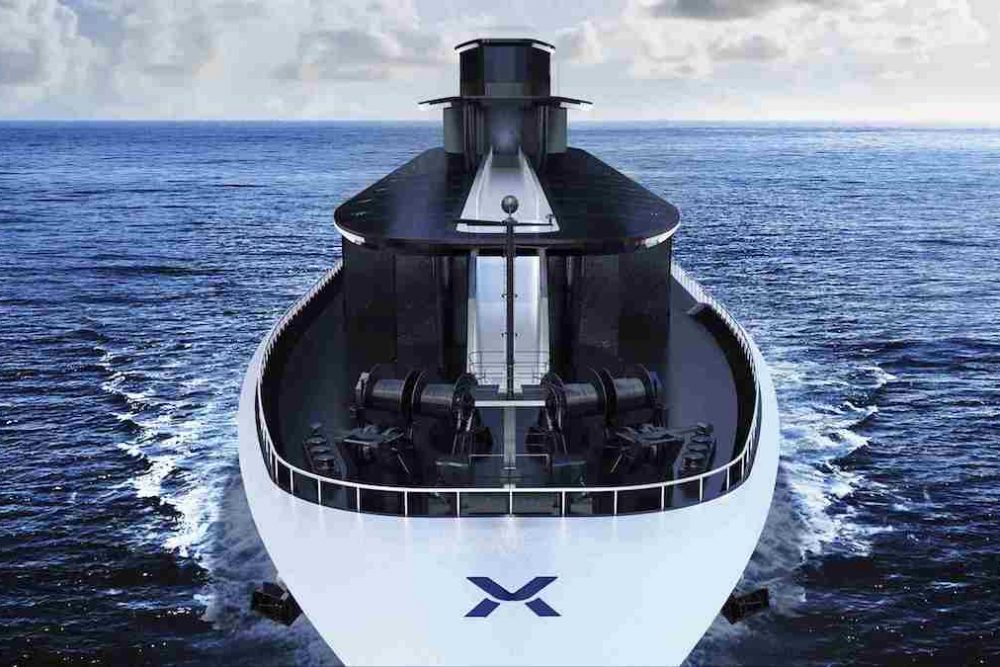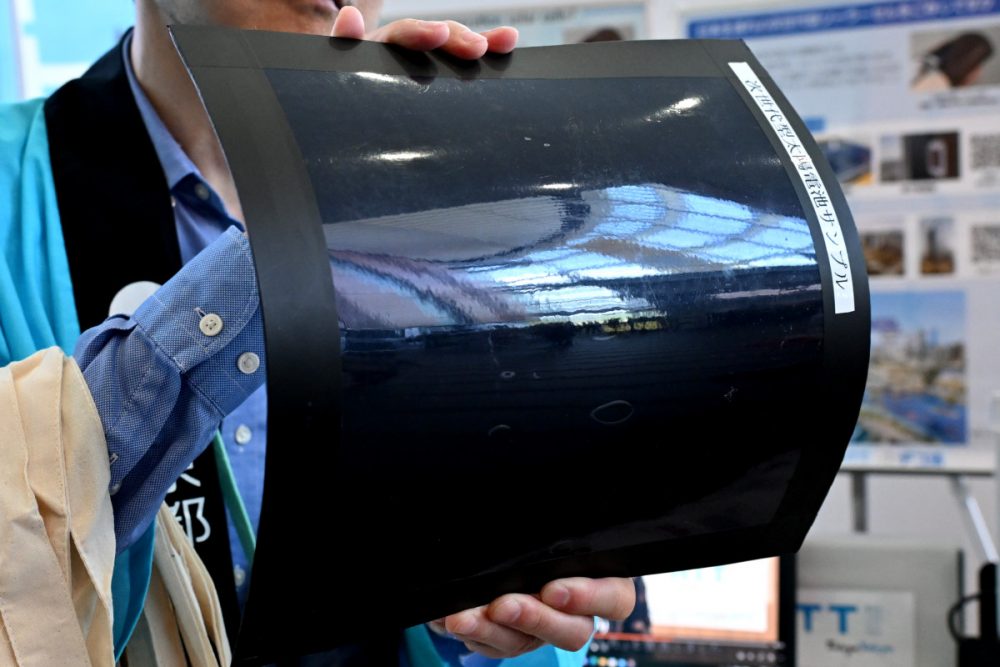Osaka Expo: Does Biomethanation Hold the Key to a Decarbonized Society?
A method to convert food waste into fuel will be tested at the 2025 Osaka Expo. If successful, it could play a key role in a future decarbonized society.
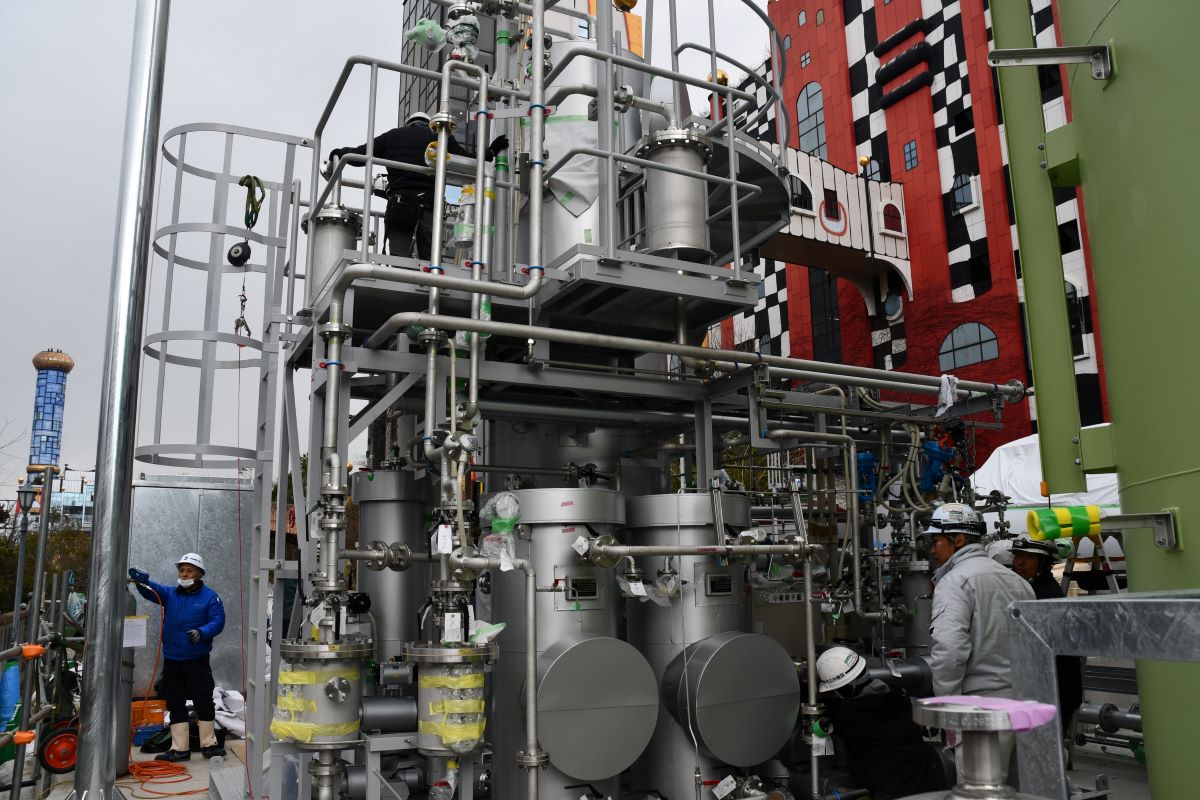
このページを 日本語 で読む
Osaka Gas is set to demonstrate biomethanation technology at the 2025 Osaka Expo. Could biomethanation hold the key to decarbonization? The company aims to promote the concept of a future decarbonized society that effectively utilizes local resources like food waste. Both domestic and international visitors are to be targeted.
The Test Facility
The test facility is currently located on about 600 square meters of land on Osaka's Maishima Incineration Plant site. It includes equipment for water electrolysis to produce hydrogen, tanks for storing hydrogen and methane, and equipment for methanation. These are tightly packed together on the relatively small site.
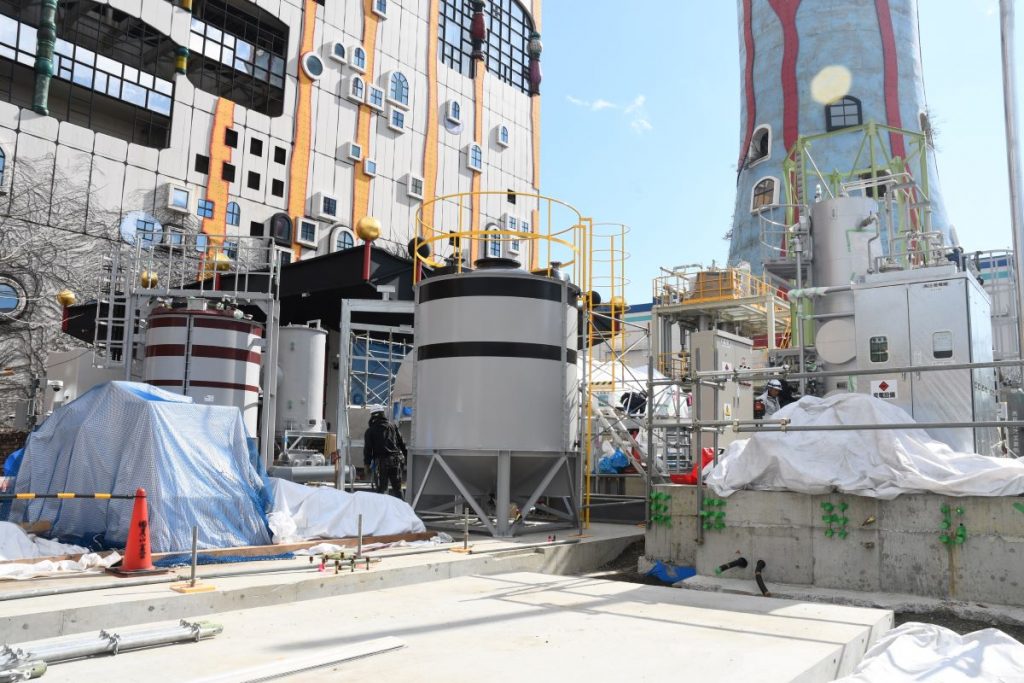
Still not completed, Osaka Gas's experimental facility will eventually be relocated to Yumeshima Island where the Expo is scheduled to open in April 2025.
Biomethanation tests planned for the Expo will focus on recovering carbon dioxide in an equivalent amount to that emitted.
How it Works
So, here's how it works. CO2 released in the fermentation of food waste will be reacted with hydrogen generated by water electrolysis. Then, synthetic methane will be produced through microbial activity. Renewable energy that does not emit CO2 is to be used to power electrolysis.
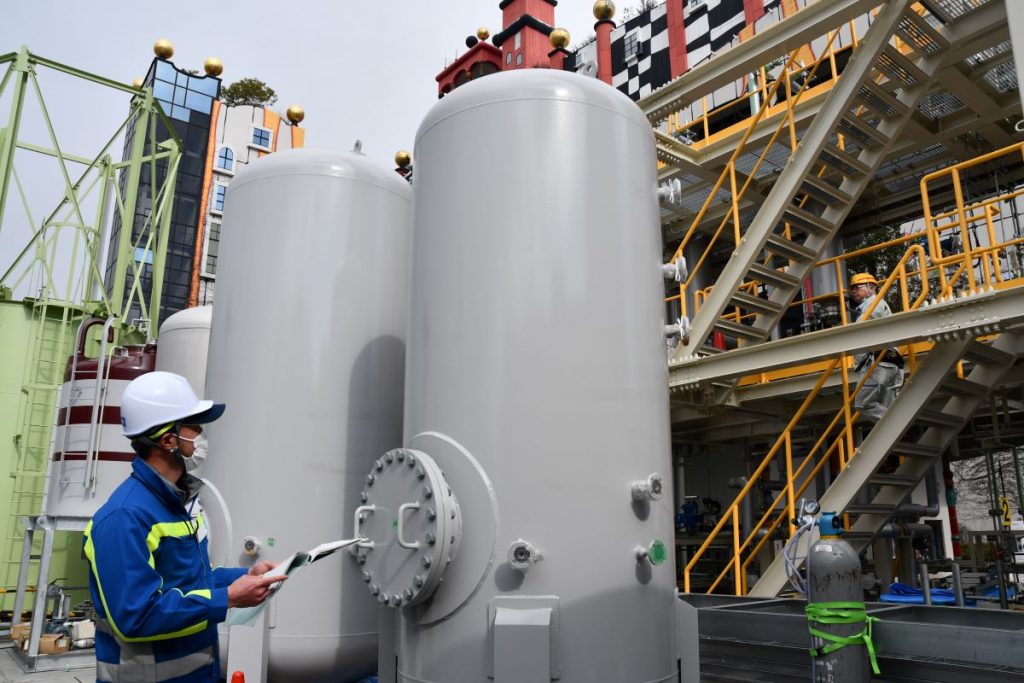
The synthetic methane produced will then be supplied through a pipeline to both the Expo facility's kitchen and cogeneration system. The CO2 emitted from cogeneration will be partially recovered using equipment provided by the industrial gas company Air Water.
Additionally, the scheme will use technology from the Research Institute of Innovative Technology for the Earth (RITE) to recover CO2 from the atmosphere.
'The Future of New Energy'
The Japan Gas Association is planning a "Gas Pavilion," and considering offering bus tours of the test facility for Expo visitors. Organizers are enthusiastic about wanting to provide as many opportunities as possible to "experience the future of new energy."
Meanwhile, Osaka Gas is aiming for commercial applications of biomethanation by 2030, alongside conventional methods that use catalysts instead of food waste. The company also plans to convert 1% of its gas supply to synthetic methane by the same year to contribute to decarbonization efforts.
The results of testing at the Expo venue could serve as a touchstone to determine the feasibility of a decarbonized society based on this technology.
このページを 日本語 で読む






